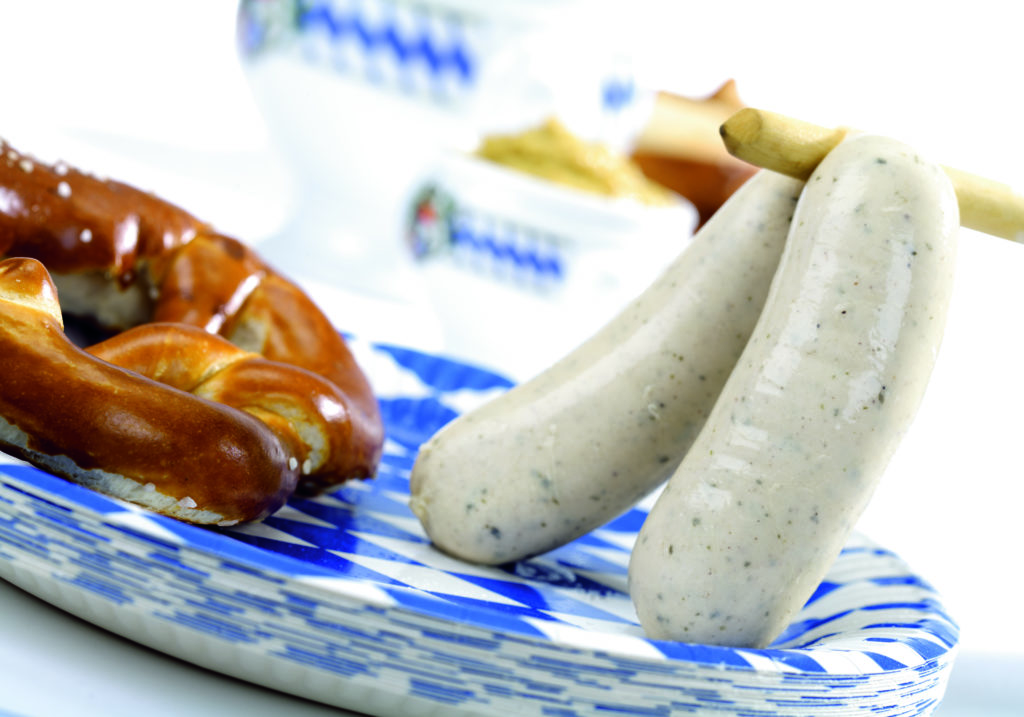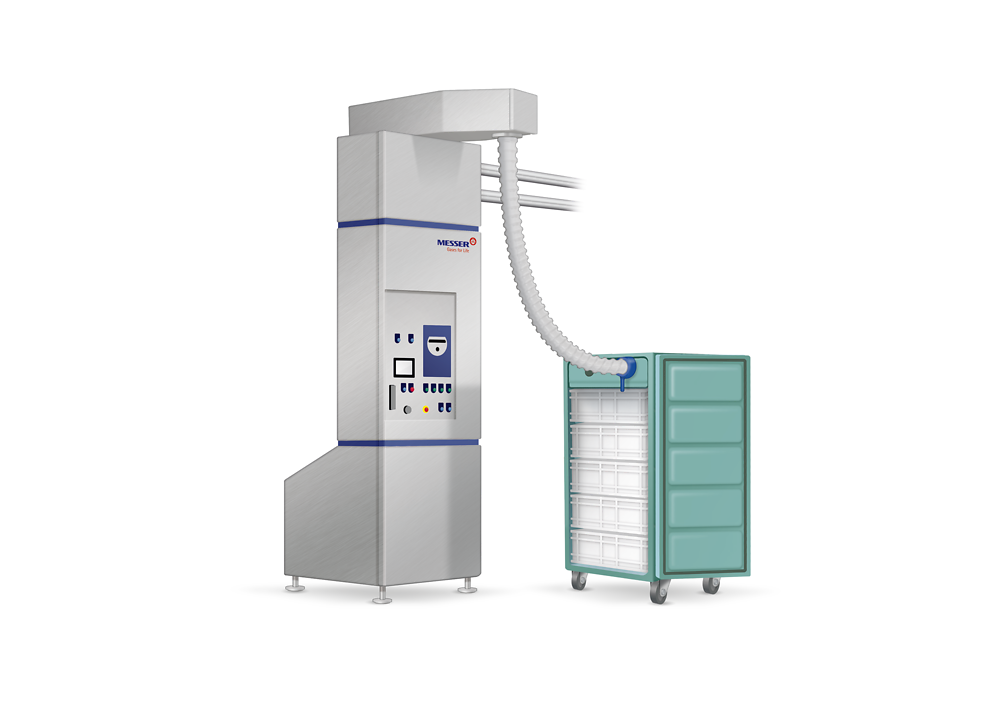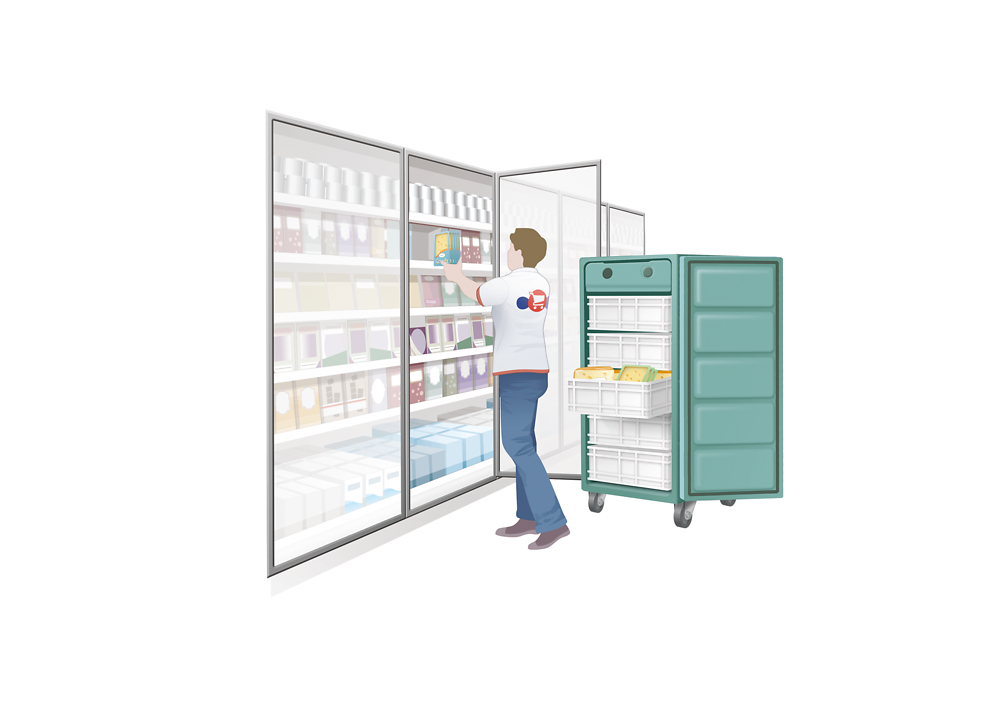Having a quick bite to eat no longer means a sandwich and an apple, nor necessarily a burger or curried sausage. A diverse fast-food industry caters to the need for quick meals. The convenience food that is now also offered by supermarkets and convenience stores covers a wide range of ready small meals for instant consumption or quick preparation. The delicious range that is available covers gourmet sandwiches, organic ravioli and a variety of mixed salads. And because fresh products are used, the food is also very healthy when combined in a balanced way. An unbroken cold chain is needed to ensure that the perishable products retain their quality between preparation and consumption. This is a technical and logistical challenge given the variety of products and customers.
There is much talk about slow food in the media. The deliberate “slowing down” of food is being propagated and no doubt practised by many – in the evenings, at weekends and on holiday. However, during the week, most of us prefer a slightly faster pace that meets the requirements of our busy everyday lives. At least that is what the constantly rising sales figures for fast-food restaurants tell us, as does the constantly growing retail space dedicated to the sale of convenience food in grocery stores. Such convenience products live up to their name and give consumers what they want: they are convenient and quick to consume.

However, the distinction between fast and fine has long since ceased to apply. Many convenience foods are produced to high standards of quality and freshness. Of course, the cold chain must also satisfy these standards in order to ensure that the high-quality products reach the customer at peak quality. This is basically not a problem – chilled and frozen food has been transported from producer to market in refrigerated trucks or cool boxes for decades.
Conventional cool boxes are kept cool by precooled elements and can also be transported in non-refrigerated vehicles. But they have to be precooled and are not as flexible to use.
These disadvantages do not apply to the Siber system, which Messer developed in collaboration with Olivo, a leading manufacturer of refrigerated containers. The Siber containers on wheels are cooled by a dry ice charge with a temperature of minus 78 degrees Celsius. The low temperature is generated when liquid carbon dioxide under high pressure is filled into the refrigerated container’s reservoir. Under normal pressure, the liquid gas expands and turns into dry ice and gas. The dry ice has a very large refrigeration capacity.
Depending on the specifications, the Siber containers contain one dry ice compartment for fresh produce and one for frozen products. This allows refrigerated and frozen food logistics to be combined flexibly. The necessary refrigeration capacity is always guaranteed for a transport duration of at least 24 hours.

The CO2 is dosed precisely for each container according to requirements. Thus, for example, the dry ice injection station can be fed with data from the ERP system. The quantity of CO2 to be injected into the reservoirs is calculated on the basis of a number of factors: the refrigeration temperature (zero to plus two degrees Celsius for fresh products, minus 25 degrees Celsius for frozen food), the ambient temperature, the transport duration including loading time and the container model are taken into account in each case. This precise dosing makes the system highly energy-efficient. The gaseous carbon dioxide that is also produced during expansion is immediately extracted in its entirety and removed from the ambient air. This means that the injection unit can also be operated safely in the enclosed workspace of a cold store.
The Siber containers, which have a capacity ranging from 200 to 1,300 litres, can be transported in a normal truck alongside non-refrigerated goods. This reduces the number of delivery trips. No cold room is required for temporary storage at the delivery location. The roll containers can simply be wheeled directly to the shop’s refrigerated display units and unloaded straight onto the shelves. This not only maintains the cold chain, but also provides guaranteed proof of an even temperature throughout. The Siber containers can be fitted with commonly used data loggers that log all the relevant events from carbon dioxide injection through to door release. All the food-related legal regulations are thus satisfied for even the most sensitive products, as are the high demands of the consumers of convenience food.

With a team of experienced professionals, we expect to bring to customers technology applications that bring high production efficiency.
For details on other technologies, applications and products, please contact us here.
 Messer: Your Trusted Supplier for All Industrial Gases Demand December 2, 2024
Messer: Your Trusted Supplier for All Industrial Gases Demand December 2, 2024
 Mục Tiêu Phát Triển Con Người Tại Messer Việt Nam November 15, 2024
Mục Tiêu Phát Triển Con Người Tại Messer Việt Nam November 15, 2024
 Messer Super Cup 2023: Connecting Colleagues and Corporate Social Responsibility September 9, 2024
Messer Super Cup 2023: Connecting Colleagues and Corporate Social Responsibility September 9, 2024
 Application of High Purity Oxygen in Industries September 6, 2024
Application of High Purity Oxygen in Industries September 6, 2024
 Application of High Purity Oxygen in Industries September 6, 2024
Application of High Purity Oxygen in Industries September 6, 2024
Do you have questions regarding Messer products, services and technology applications?
We are always ready to support